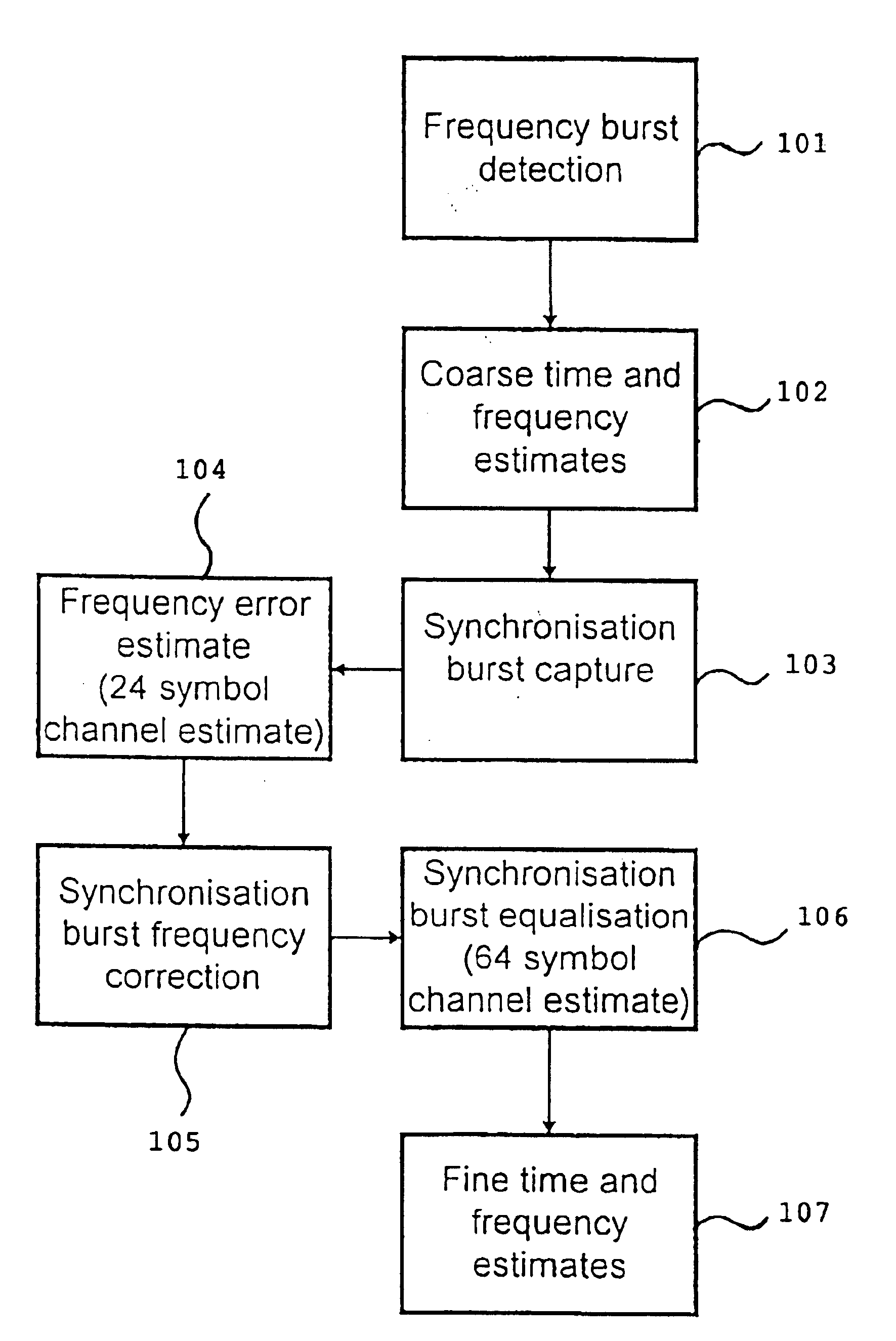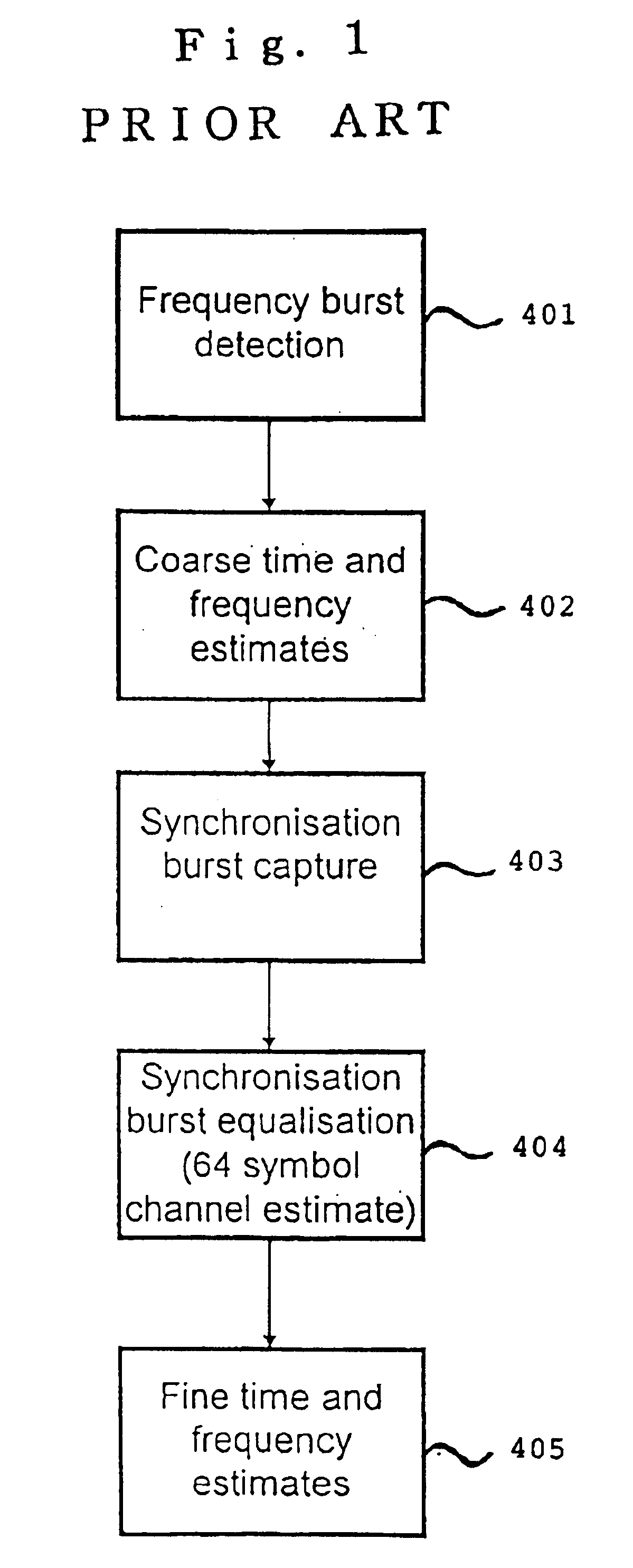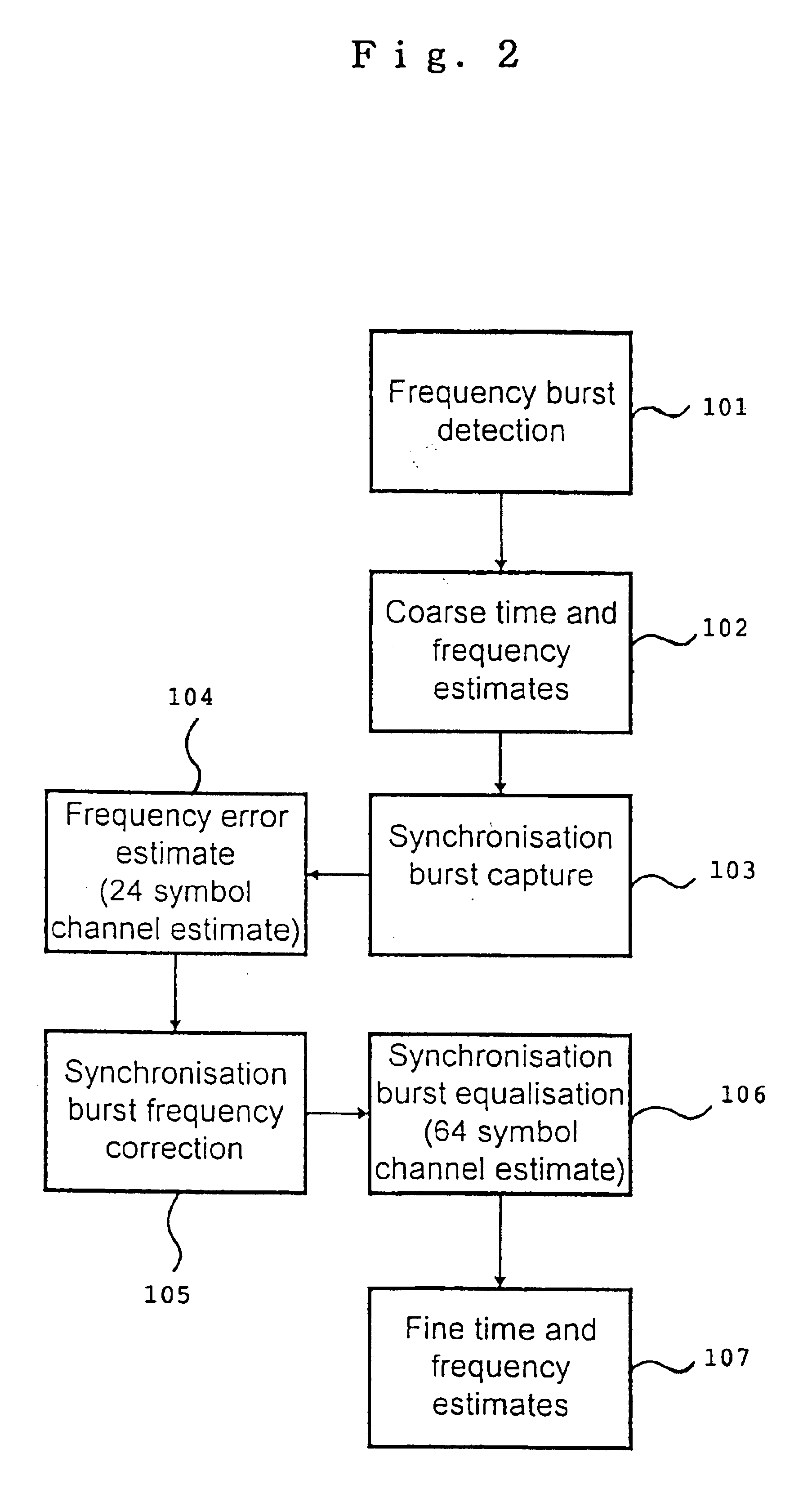Synchronization in digital data transmission systems
- Summary
- Abstract
- Description
- Claims
- Application Information
AI Technical Summary
Benefits of technology
Problems solved by technology
Method used
Image
Examples
Embodiment Construction
[0020]A means for an improvement over the prior art methods in the tolerance to residual frequency error of the Synchronization Burst decoding process is illustrated in the flow diagram of FIG. 2. The frequency burst detection (step 101) and coarse time and frequency estimates (step 102) are obtained in the usual manner in accordance with prior art methods.
[0021]A GSM training sequence is shown in FIG. 3 with each of the symbols labelled 1 to 64. It is convenient here to show the training sequence as comprising three sections labelled A, B and C. The full sequence of symbols from 1 to 64 is transmitted consecutively, however, and FIG. 3 serves to illustrate as section B the 24 symbol sub set used to obtain the frequency error estimate. The symbols 1 through 64 would be the training sequence expected to be received by the mobile phone terminal.
[0022]Returning to FIG. 2, at capture of the synchronization burst (step 103) the received training sequence is cross correlated with the subs...
PUM
 Login to View More
Login to View More Abstract
Description
Claims
Application Information
 Login to View More
Login to View More - R&D
- Intellectual Property
- Life Sciences
- Materials
- Tech Scout
- Unparalleled Data Quality
- Higher Quality Content
- 60% Fewer Hallucinations
Browse by: Latest US Patents, China's latest patents, Technical Efficacy Thesaurus, Application Domain, Technology Topic, Popular Technical Reports.
© 2025 PatSnap. All rights reserved.Legal|Privacy policy|Modern Slavery Act Transparency Statement|Sitemap|About US| Contact US: help@patsnap.com



